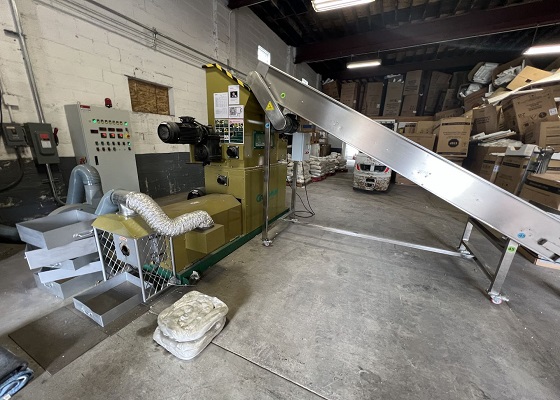Styrofoam packaging is widely used in the field of home appliance packaging. It has excellent cushioning, light weight and impact resistance, and can protect the safety of home appliances during transportation and storage. However, as the demand for consumer electronics and household appliances grows rapidly, the amount of foam packaging waste has also increased significantly. Since EPS is difficult to degrade, if it is not properly processed and recycled, it will cause a huge burden on the environment. This article will discuss the recycling issues of foam plastics in home appliance packaging, existing recycling models and solutions.
Styrofoam is extremely light but bulky, making it inefficient during transportation and storage. Foam’s low density means it takes up more space for shipping, and its lightness makes shipping expensive. Many recyclers are not very enthusiastic about recycling foam plastics because of the high transportation costs and poor economic benefits of recycling foam plastics.

Although styrofoam is difficult to recycle, it can be easily recycled with the right recycling equipment. Styrofoam densifier is the most popular equipment in North America and is mostly used to recycle styrofoam home appliance packaging. The compression ratio of GREENMAX styrofoam densifier can reach 90:1. It is precisely because of the higher compression ratio that this styrofoam densifier is so popular.
For bulky foam plastics, compression treatment is a common preliminary recycling method. Foam plastics are compressed through specialized equipment to reduce their volume and reduce transportation and storage costs. Recycling of foam plastic packaging for home appliances is an important part of solving the problem of plastic pollution. Despite the challenges associated with recycling this material, there is huge potential to recycle foam with the help of styrofoam densifiers, policy support and technological innovation. In the future, through the joint efforts of many parties, the recycling rate of foam plastics can be significantly increased, environmental pollution can be reduced, and the development of circular economy can be promoted.
